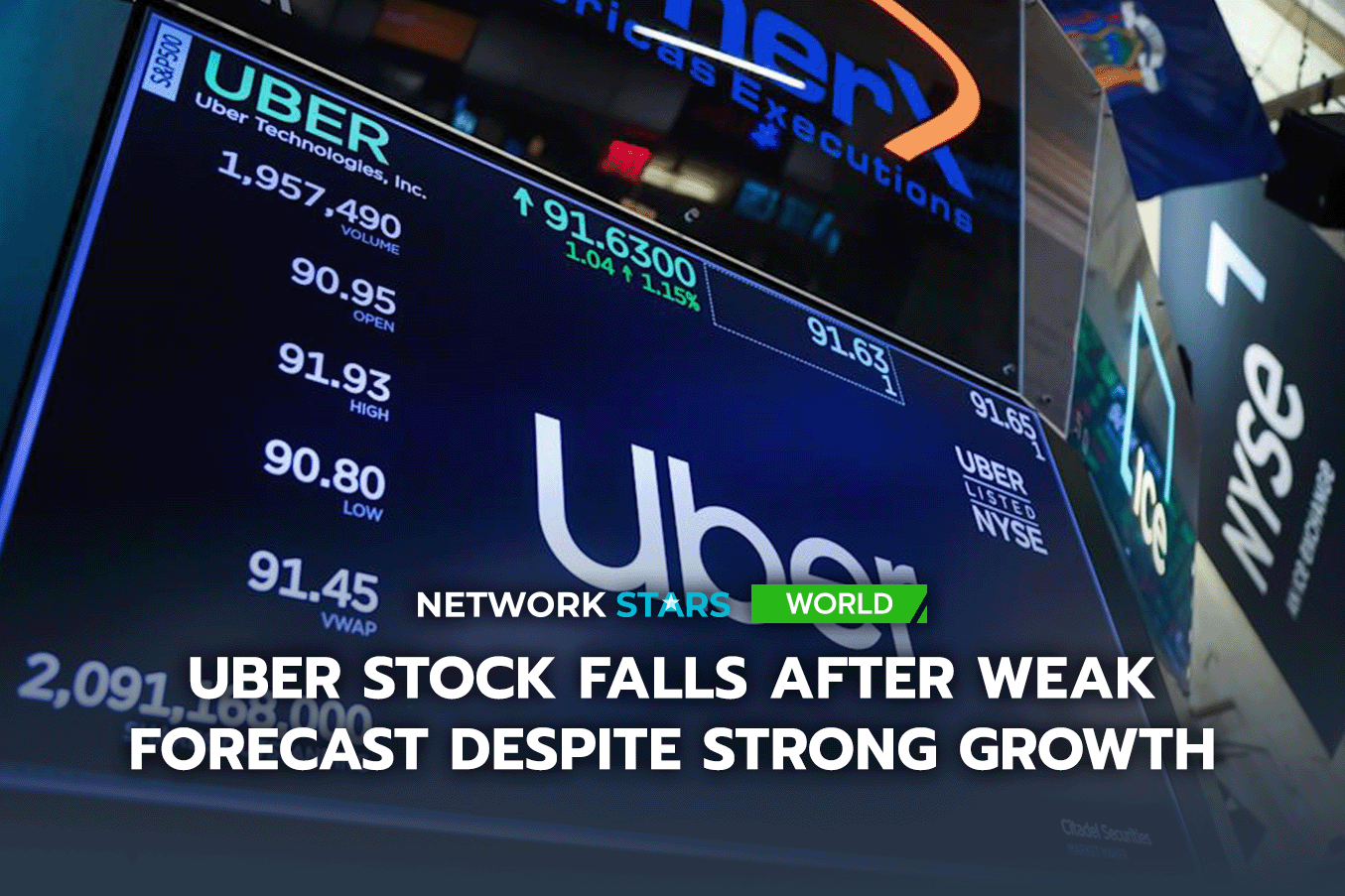Uber Technologies Inc. shares post their biggest drop in 11 months after presenting a moderate adjusted earnings forecast, which overshadowed the solid growth of its transportation and delivery businesses.
Operating income for the quarter ended September 30 was $1.11 billion, the company said in a statement on Tuesday. Analysts had expected $1.62 billion, according to data compiled by Bloomberg. Part of the difference was due to undisclosed legal and regulatory matters, Chief Financial Officer Prashanth Mahendra-Rajah said in prepared remarks. Adjusted earnings before interest, taxes, depreciation, and amortization (adjusted EBITDA) were $2.26 billion, slightly below estimates.
Uber also noted that adjusted EBITDA for the fourth quarter will be between $2.41 billion and $2.51 billion, with a midpoint below analysts’ average projections of $2.49 billion.
Uber shares fell as much as 9.7% after the markets opened in New York, their biggest intraday decline since December 5, 2024, before recovering some of their losses. By the close of trading on Monday, the shares had gained 65% so far this year, well above the S&P 500 index.
The results and outlook overshadowed an otherwise positive report, which showed the strongest quarterly growth since late 2023. Customers requested more rides and delivery orders than expected, a sign that the company’s efforts to offer a wider range of services in more geographies are paying off.
Total gross bookings—a key indicator that includes trips, delivery orders, and driver and merchant earnings, but not tips—rose 21% to $49.7 billion in the third quarter, exceeding analysts’ estimates. Chief Executive Dara Khosrowshahi said travel growth in the US accelerated thanks to “greater adoption of low-cost options and moderation in insurance costs,” while strong summer tourism boosted international demand.
This led to a sharp increase in total trip volume during the quarter, which Uber described as the largest increase in its history outside of the post-pandemic rebound.
The company expects to maintain this momentum heading into its busiest period of the year. The fourth-quarter booking forecast of between US$52.25 billion and US$53.75 billion also exceeded expectations, representing a growth rate of between 18% and 22%, according to Bloomberg calculations.
The negative market reaction contrasted with the largely positive comments from Wall Street analysts.
William Blair researchers stated that Uber “remains well positioned, with adjusted EBITDA continuing to expand through 2025 and 2026, along with sustained free cash flow expansion.” For their part, Jefferies analysts wrote that the report reinforces their confidence in the sustainability of booking growth of around 15% and EBITDA growth of over 20% through 2027.
These results could influence expectations for other food delivery and transportation companies, as investors look for signs of the health of the American consumer. Rivals Lyft Inc. and DoorDash Inc. are scheduled to release their results after the market closes on Wednesday. Lyft shares fell as much as 6.8%, while DoorDash shares fell 2.3% before recovering ground.
Uber plans to change how it reports profitability starting in the first quarter of next year, replacing adjusted EBITDA with adjusted operating income. It will also begin issuing adjusted earnings per share projections when it publishes its first-quarter guidance.
Mahendra-Rajah pointed out that the new format does not alter the company’s three-year projections. “We are well positioned to meet our long-term financial commitments while making strategic investments to adequately fund growth initiatives,” he said in his statements.
Strategic roadmap
Khosrowshahi publicly unveiled the six strategic areas on which Uber will focus its medium-term growth. These include expanding its transportation and delivery businesses, creating a hybrid platform with human and autonomous vehicles, offering different types of temporary jobs, and developing generative artificial intelligence.
Uber has made concrete progress in these areas, such as signing more than a dozen partnerships in autonomous vehicles, creating an AI data labeling business for companies, and launching new digital tasks for drivers. The company only began sharing details of its vision this year, and at that time, its comments were directed solely at employees.
Mahendra-Rajah said Uber has divested about $1.4 billion in equity holdings out of a total of $10.3 billion invested in other companies. The proceeds will go toward priorities such as launching more robotaxis globally.
Investments in autonomous vehicles will not be profitable for several years, as the company continues to work on expanding their availability to users, Khosrowshahi said in a call with analysts after the results were announced, something Uber had previously warned about.
“Every new product we launch starts out in a position where we lose money and are unprofitable, and the pattern is always the same,” he explained, describing the approach as a “stick strategy” for new initiatives. “As liquidity and reliability improve, so does consumer demand and willingness to pay more. We’ve done this ten, fifteen times, over and over again.”
Source: Yahoo!finanzas

